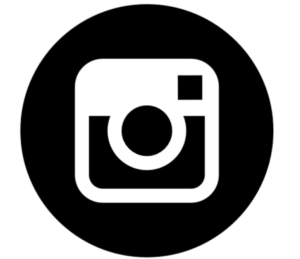The Timid Wilderness, an installation part of the Les Voyages De Capitaine Future project Supernatural; Stories of Worlds to Come.
Disrupting Usual Expectations of Reality by Layla Leiman
Pro Helvetia Resident Artist
Artists-in-Labs Residency Program
Brundyn + website
Flipping Heads on Cliches by Sandiso Ngubane
Top of the Milk by Gavin Younge in Art South Africa
A Portrait of a Young Artist Series: Revolution? by Natasha Norman
In- Exhibition Catalogue, Brundyn and Gonsalves
Green Your Art at the Michaelis Graduate Show
Michaelis Graduate Show 2012 by Karen Bekker
CRITICAL MIS, an ongoing collaborative practice with Chris van Eeden
______________________________________________________________________________
Written by Layla Leiman on Nov 10, 2016
In the latter half of the 18th century the Romantics turned to Nature as a symbolic response to the rationalism of the Enlightenment period and the rapid industrialisation of the Western world. At a similar time, philosophers were evoking Nature as a metaphor for the Sublime; an incomprehensible and overwhelming manifestation of existence. In present-day Cape Town, multi-media artist Miranda Moss toys with the representation of Nature in her work as a pure and extra-cultural phenomenon.
Describing her work as “techno-alchemy”, Miranda sets out to interrogate the signifiers of everyday found objects through repurposing them in her work. Using household consumer products, plants, lights, analogue tech and random China Town bits and bobs, Miranda’s work embues banal objects with a magical element yet distinctly anti-sublime outcome. Part play, part mad scientist, part art, we speak to Miranda to find out more about her inventive tongue-in-cheek work.
You describe your work as a kind of “techno-alchemy”. Please tell us more about your approach to making art.
My practice largely relies on using readily available materials and technologies to turn something into something else and, in the process, imbue these things with a sense of magic, while ephemeral processes materialise in GIF-like loops. However, this is embedded with its own failure – nothing is magic; it’s all just smoke and mirrors and magnets and broken tape decks. My work seems to ascribe to a kind of cynical optimism, where things are somehow anti-climactically sublime.
You incorporate a range of found objects in your work. What appeals to you about working with these disparate elements?
I think contemporary sculpture is in a bit of a crisis, as reality is already pretty full of bizarre and fascinating objects. So rather than attempting to make anything completely new (or heaven forbid, representational), I like to construct new situations with existing objects, so that the work relies on the tension created between their relationships instead. Found objects bring with them their own sets of signifiers which construct meaning and narratives in the work. I enjoy using kind of banal, relatable objects, and putting them into some bizarre configuration, which I hope changes the way we think about our interaction with reality.
Are there any particular objects or materials that you enjoy working with, or does the idea for each artwork dictate the medium?
I mostly enjoy working with things that have a life of their own, like plants and physics. Despite being logistical nightmares, they allow for a kind of lack of control on my part, which is where a lot of the excitement, and frustration, happens.
The idea for each work definitely dictates the medium, but also vice versa; I am constantly collecting objects I find fascinating and slowly these start to take on some or other ridiculous configuration. At the end of the day, all of the materials have to be relevant to the work’s concept in some way, all the way down to the brand of plug I use.
You’re interested in the idea of science and nature as culturally embedded phenomena and in the relationship between humans and the natural world. Can you tell us more about this and how you explore this in your work?
I am fascinated with the representation of nature through any lens, but I suppose science is one that we seem to forget brings with it its own cultural weight and problematics. Its language is very dry and serious, which I like to incorporate and undermine to highlight a more blatantly subjective and poetic view of reality.
I am equally, if not more fascinated by the use of the natural world in product packaging, as the earth’s contemporary representation in advertising tells us a lot about how we see it. There is this pervading sense that Nature is always idyllic, clean and pure, and can remove 99.9% of all bacteria and stains.
I like to explore the relationship between these representations and The Actual Thing, and seek instances where these form a feedback loop with each other.
I guess I see it as a challenge to use the language of something that is usually associated with objectivity and sterility to express human fears, social injustices, abjection, and all those other unfortunate by-products of being sentient.
What other themes or ideas are you currently exploring in your work?
I think people immediately put my work into the vague and kind of hippy-ish category of ‘environmental art’ because I employ the imagery of nature and the languages used to represent it. But I wouldn’t say my work is about nature; more that I use this imagery and language as a medium to express very human conditions.
Don’t get me wrong – I can’t wait for us humans to kill ourselves so that the earth can go on its merry way, but I’m also fine with just creating things that leave children and stoners confused, or make someone giggle, or just disrupt someone’s usual expectations of reality in any way.
Your work feels more like playful experiments than sculptures. What role does humour play in your work?
I’m not aware of any humour in my work. It’s all very serious.
What’s your creative process?
Usually it starts with me getting my hands on and opening up some piece of machinery. I have absolutely no background in electronics, so I learn everything as I go along. This process of taking something apart to understand it is very satisfying for me. Then I think of all the ways I could subvert its function, and how I can alter it to do so. I guess this process also applies to the ‘analog’ objects I dissect; my practice is very research-based, delving into the histories and associations of the plants, wood and products I use, which I pull apart, re-configure and juxtapose with each other.
Sometimes, however, I’m just like: “I want to make an infinitely smoking cigarette” or something such, and then I figure out how to do that, spending my evenings tinkering with some absurd and ill-devised mechanism. All in all, my process is foundationally reliant on a lot of stressfully intense and highly serious daydreaming.
Which artists’ work are you interested in and inspired by?
That would make a boringly long list, but several artists that pop to mind include Phoebe Washburn, Thomas Teurlai, Dineo Bopape, Rashid Johnson, Yuko Mohri and whoever makes all that amazing stuff you find in China Towns.
I also draw from artists such as Olafur Eliason but reject the high-budget, monumental and kind of macho way their work manifests. Like I think Anish Kapoor’s work would be much nicer if he made it out of paper mache and tin foil.
What’s next for you?
Next year I’m off to Switzerland on a residency supported by Pro Helvetia. My starting point for the project is to seek out and investigate the plant senecio inaquedens, or the South African ragwort, which is an extension of my fascination with weeds as discreet markers of colonialism and globalisation. The plant is indigenous to South Africa, and was accidentally introduced to Europe through wool exports of the 1800s being contaminated with the plant’s winged seeds. Due to temperature increases in Europe, it has recently become a serious ecological problem, predominantly in Holland. The history of these ‘invasive aliens’ seems far too metaphorical not to investigate.

